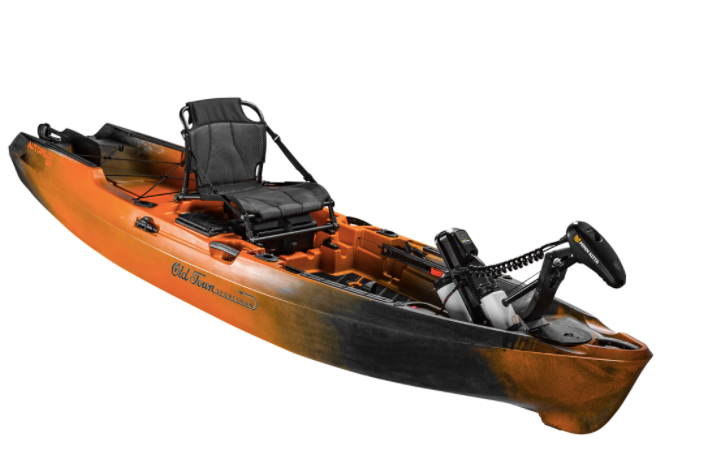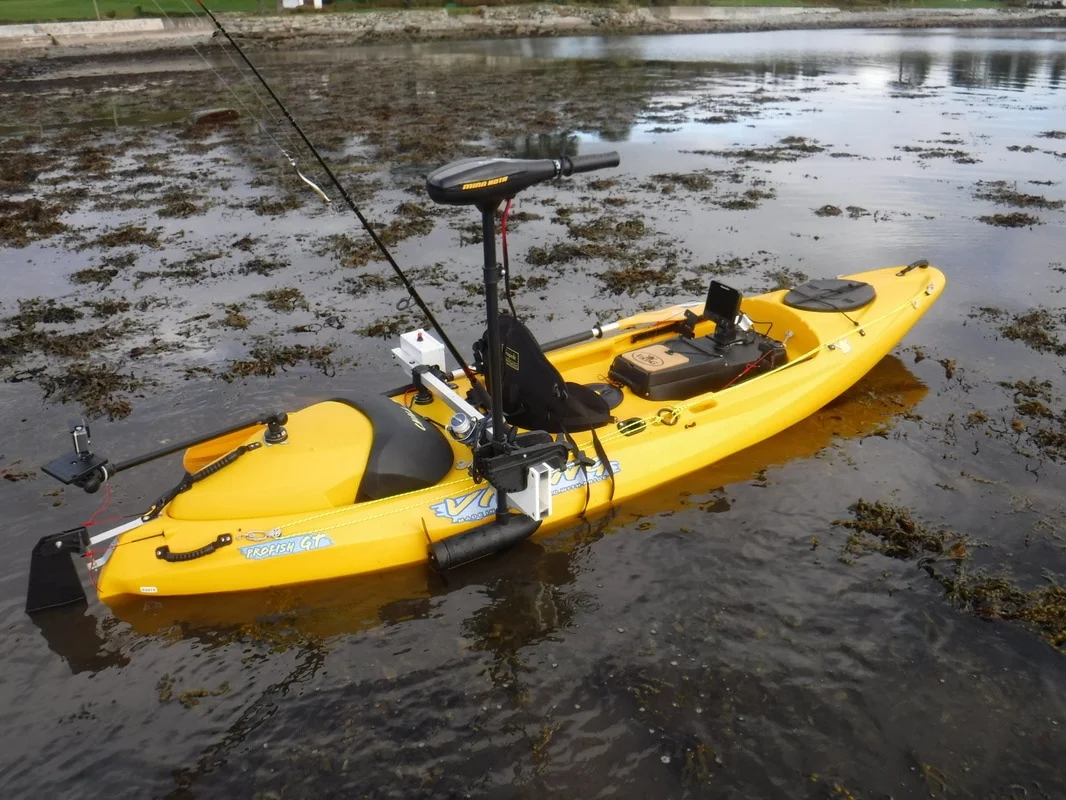Kayaking is a popular outdoor activity that allows enthusiasts to explore water bodies, from serene lakes to rushing rivers. Traditionally, kayaking relies on human-powered paddling for propulsion, offering a quiet and environmentally friendly way to experience nature. However, as technology evolves, questions arise about the feasibility of adding a motor to a kayak. This article delves into the topic and would answer the question: can you put a motor on a kayak? It will also provide insights into the possibilities, benefits, considerations, and potential challenges associated with adding a motor to a kayak.
The Feasibility of Adding a Motor to a Kayak

Possibilities and Benefits
- Increased Speed and Efficiency: A motorized kayak can significantly enhance the speed and efficiency of propulsion, allowing kayakers to cover longer distances in a shorter amount of time.
- Reduced Physical Effort: Adding a motor eliminates the need for continuous manual paddling, making kayaking accessible to a broader range of individuals, including those with physical limitations.
- Extended Range: Motors can enable kayakers to explore larger water bodies and even reach remote areas that might have been challenging to access with paddling alone.
- Versatility: Motorized kayaks can be used for various purposes, such as fishing, wildlife photography, and exploration, expanding the possibilities of kayaking experiences.
Types of Motors for Kayaks
- Electric Motors: These motors are quiet, eco-friendly, and easy to control. They are typically battery-powered and offer various speed settings.
- Gas-Powered Motors: These motors provide higher speeds and greater power, suitable for longer journeys and larger water bodies. However, they tend to be louder and require more maintenance.
Factors to Consider Before Adding a Motor
Stability and Weight Distribution
- Stability Concerns: Adding a motor may affect the kayak’s stability. It’s essential to choose a motor and installation method that maintains the kayak’s balance on the water.
- Weight Distribution: The motor’s weight should be evenly distributed to prevent tilting or capsizing. Consider the kayak’s design and capacity for handling extra weight.
Legal Regulations
- Licensing and Registration: Depending on your location, motorized watercraft may require licensing and registration. Ensure you comply with local laws and regulations.
- Motor Restrictions: Some water bodies might have restrictions on motorized vessels to protect the environment and maintain a peaceful atmosphere. Research and adhere to any motor-related restrictions.
Kayak Modification
- Compatibility: Not all kayaks are suitable for motor installation. Sit-on-top kayaks generally offer more space for motor setups, while traditional sit-inside kayaks might require more extensive modifications.
- Mounting Options: Explore different mounting options for attaching the motor, such as transom mounts, motor mounts, or brackets. The chosen method should be secure and sturdy.
Power Source and Battery Life
- Electric Batteries: If using an electric motor, consider the battery’s capacity and runtime. Longer excursions might require additional batteries or a backup power source.
- Charging Infrastructure: Ensure you have access to charging facilities, especially for longer trips. Solar chargers are a potential solution for remote locations.
Maintenance and Repairs
- Regular Maintenance: Motors, especially gas-powered ones, require regular maintenance to ensure optimal performance. Learn how to properly care for the motor and address common issues.
- Repair Accessibility: Consider how easy it is to access repair services or obtain replacement parts, particularly for gas-powered motors that might require specialized attention.
Benefits and Drawbacks of Motorized Kayaking
Benefits
- Efficiency: Motorized kayaking allows covering more distance with less effort, providing an efficient mode of exploration.
- Accessibility: Individuals with physical limitations can enjoy kayaking without strenuous paddling.
- Fishing and Photography: Motorized kayaks offer stability for fishing and a steady platform for wildlife photography.
Drawbacks
- Environmental Impact: Gas-powered motors can contribute to water pollution and noise disruption, potentially affecting aquatic ecosystems.
- Less Physical Engagement: The joy of paddling and connecting with nature through physical effort might be reduced in motorized kayaking.
- Cost: Adding a motor involves initial investment costs for the motor, batteries, and potential modifications.
Conclusion
The question of whether you can put a motor on a kayak opens up exciting possibilities for enhancing kayaking experiences. While the benefits are undeniable, careful consideration of factors like stability, legal regulations, kayak modifications, power sources, maintenance, and the overall impact on the kayaking experience is crucial. Whether you opt for an electric motor or a gas-powered one, striking a balance between convenience and environmental responsibility is key. By making informed decisions and embracing the evolving technologies, you can embark on new adventures while preserving the beauty and tranquility of the water bodies you explore.
- What to Wear for Kayaking in Summer
- How to Store a Kayak in the Garage
- What is a Skeg on a Kayak
- What is a Tandem Kayak
- How to Build a Homemade Kayak Launch
- How to Get in a Kayak
- What to Wear for Kayaking?
- How to Transport a Kayak Without a Roof Rack?
- How to Build a Kayak Rack for an RV?
- Are Inflatable Kayaks Safe?
- How to Build a Rack for Kayaks?
- Do Kayaks Have a Weight Limit?
- Wilderness Systems Pungo 120 Kayak Review
- Is it hard to kayak?
- How to Lock a Kayak?
- Where to Kayak with Manatees?

Hi, I’m Steve, the passionate kayaking enthusiast behind Outdoor Bravo. As an avid adventurer and nature lover, kayaking has been a central part of my life for as long as I can remember. My love affair with the water began during my childhood, and it has only grown stronger over the years. From serene lakes to rushing rivers and even challenging ocean tides, I’ve navigated various water bodies, seeking new thrills and unforgettable experiences.
